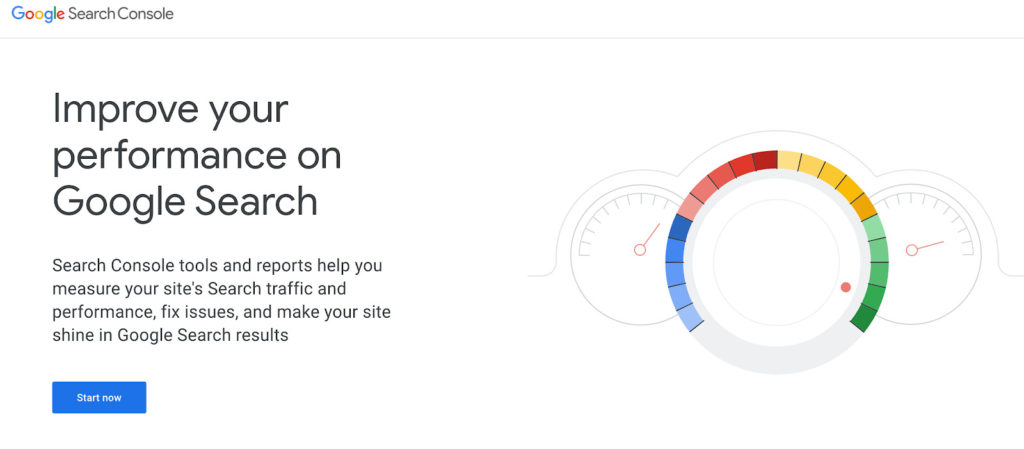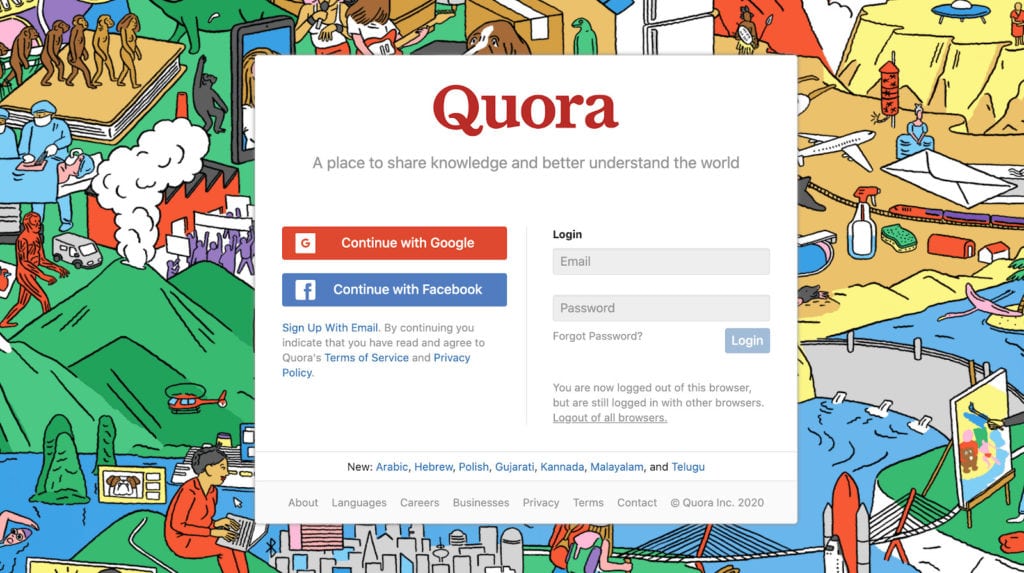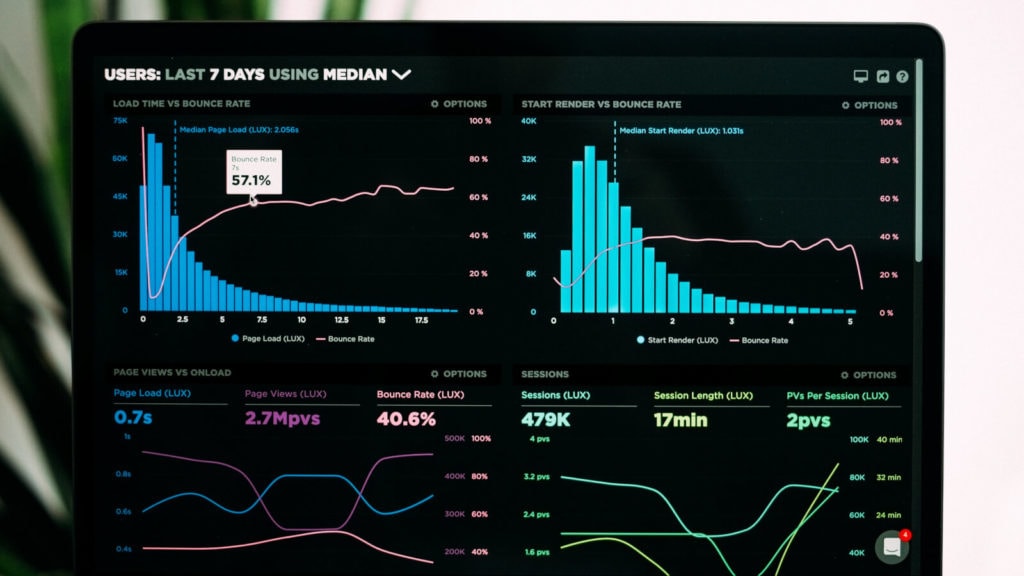When you ask a client about their most significant pain points at the outset of a working relationship, there's a standard answer: We don't have enough awareness.
Increased awareness comes from a few different avenues but always has better website traffic as an element. Writing more, creating more, isn't the only path to better traffic.
There are underrated ways to help your clients get more website traffic, fast, without writing a word.
Here are six methods we'll check out:
- Improve your client's site's Health Score using Ahrefs
- Do a site evaluation in Google Search Console
- Revisit and strengthen your client's website internal linking
- Hire a freelancer to answer questions in the client's niche on Quora
- Have your client acquire guest posts and hire a freelancer to write them
- Buy a Facebook ad to drive traffic to an awareness article
Improve Your Site's Health Score Using Ahrefs

Ahrefs is a fantastic SEO and website auditing tool that helps content marketers and agencies evaluate initiatives' success.
Ahrefs offers a 7-day, $7 trial. During the trial, your client can do all of the work needed to improve their Health Score. And then decide if it's worth holding onto and subscribing. Ahrefs is expensive, but if you use it daily, the cost is justified.
One of the more underrated features of Ahrefs is Health Score tracking. Ahrefs' Health Score measures how "healthy" a website is from an SEO perspective. This health can affect how Google indexes content.
Several factors make up a website's Health Score, including, but not limited to:
- The number of broken links on the website
- The number of redirected links on the website
- The number of redirect loops on the website
- How quickly, or slowly, each of the pages loads
Broken links - which typically lead to 404 Not Found Error pages - are easy to fix. Ahrefs shows you where the page with the broken link points so you can edit the link to correct it. Redirections and redirect loops are a little more complicated. They require some sleuthing, but with a few Google searches and the help of Ahrefs' walkthroughs, they're also fixable.
Page load speed is another significant factor in how Google sees your site and your ability to rank in search.
There are a few easy ways to correct slow loading pages:
- By compressing all images
- Using standard fonts, and
- Avoiding plugins or other items that cause long loading times or drag on resources
As you increase your client's Health Score in Ahrefs, you'll find their content starts to surface new organic keywords. As they surface new keywords, they can earn more traffic and continue developing a catalog of fresh ideas for future content. Digging into Google Search Console is another great way to audit a client's website and find improvement areas.
Do a Site Evaluation in Google Search Console

Google Search Console measures how consistently Google is indexing your client's content. It also evaluates where that content ranks in search and shows issues that need correction.
The Performance screen shows the total number of clicks and impressions your client's content has earned. It also shows the Click Through Rate (CTR) of impressions and keywords your client is ranking for in the Top 100. Google updates this Performance screen often. It's a good idea to check back several times a week to see changes.
The URL Inspection tool is vital. By adding the URL of a page, you can see if Google has indexed that page. If they haven't, your client is losing out on traffic. If the page isn't indexed, no one can find it unless they type its address directly into a browser!
Within the inspection tool, you can manually request pages for the index. Make sure your client is doing this each time they add a new page to their site or publish a new blog post. Especially when their site is young, and Google hasn't yet made a habit of crawling it.
The Coverage tab is a great place to see indexed content and content with issues. If several pages are listed as "Excluded," this could be hurting a site's reputation. And keeping your client from earning the traffic they deserve. Make sure to address these issues with your client as soon as possible.
To double-check what you see in GSC, search Google for site:yourwebsitesname.com. For example, for my website, I would search, site:krishughes.com. Doing this search will show you how Google has indexed your client's pages. It may be less than you're expecting!
This number should consistently increase week over week. If it isn't, refer back to GSC to see what issues need addressing. Once you've done some auditing, turn attention back to your client's site to examine their internal linking structure.
Revisit and Strengthen Internal Linking Structure

It's not just incoming links that strengthen a website's presence. It's also vital to establish a solid internal linking structure.
The easiest way to do this is to link to a few other articles on a blog each time you publish something new. Let's face it, though: We're human, and that step is easy to forget. There's a tool that makes this process easier. It's called Link Whisper.
I would strongly advise your clients to add it to their tool stack and put it to use for previously published content and future blog content.
Link Whisper automatically links keyword phrases to create links to articles written around those phrases. It's incredibly valuable if your client has written a large amount of content. And they don't want to dig to find one that's relevant each time they create an internal link.
It's $77 a year for a single site license, reasonable at a little over $6 a month. Working in the background, it's a light lift for your clients to use on all of their content. If you want to go the manual route, that's possible. But Link Whisper prevents a lot of the headaches that come in doing so.
No matter the route, what's most important is you always think about how you can link articles together as you write and edit content.
Another great tool to use to drive some fresh attention to your client's website is Quora.
Hire a Freelancer to Answer Questions in Your Client's Niche on Quora

Quora is an underrated resource to build a reputation as a thought leader and an authoritative voice in your niche. It's a platform that provides what you're willing to give.
It's similar to LinkedIn in this way.
If your client is willing to be selfless and give away what they know, that's a significant first step. They then gently push people toward their website for more details. This process yields a consistent source of organic traffic.
There are three types of questions a client can have freelancers answer on Quora:
- Those Quora provides based on previous answers
- Questions Quora followers specifically request you to answer, and
- Those you seek out based on benchmarks that typically lead to success
Quora's machine learning works well. The questions it will provide to answer are typically in the user's wheelhouse.
If they aren't about your primary topics, they'll be about something closely related. It's a good idea for the contracted freelancer to answer a few of these questions each day to signal Quora they would like to receive more. This relevance sometimes can be missing with questions asked by people following you on Quora. Your freelancer can be pickier here about what they wish to answer.
I would default toward answering those questions directly relevant or from people who have been following your client's account for some time.
Your freelancer should consider these benchmarks for questions to answer:
- One that's less than an hour old
- A question that's no older than a week and has at least 1,000 views, or
- No older than a month, and with at least 5,000 views
It's a bad idea to comment on a question with tens of thousands of views and hundreds of comments. It will get lost in the mix. Instead, focus on those where your answer has a chance at getting seen early and can stand out.
There's also a solid post structure to follow, which yields results.
Here's a screenshot of a typical Quora answer I've done:

I bold the header to make my answer stand out in the comment thread. In this bolded text, I immediately answer the question asked.
Then, in the rest of the text, I detail my answer to clarify why I took the position I did. To conclude, I transition to promoting a few articles on my website to encourage people to click and learn more.
This process is easy to repeat in 30 minutes a day. It's all you need to have a freelancer dedicate to get a solid ROI.
Contract them for four hours a week, lay the groundwork, and turn them loose!
Acquire Guest Posts and Hire a Freelancer to Write Them
Landing guest posts takes finesse and proper targeting, but it's easier than people might imagine. The key to guest blog outreach is to be reasonable about the sites you target.
The proper domain authority (DA) match is crucial if you're new to the game.
Domain authority was developed by sites like Ahrefs and SEMRush to tell site owners how their site stacks up. Every new blog starts with a 0 DA. Sites like Facebook, Twitter, and Google are 99s - on the other end of the spectrum.
If you have a ten DA and never written for any sites outside of yours, it's going to be challenging to land a guest post on a 75 DA site. If you have a 30 DA and a catalog of guest posts to show proof of your writing ability, it's a different story. Like anything else in the content world, you crawl first before you walk.
It's relatively easy to do reverse engineering to see what sites may be accepting guest posts. Remember that 7-day Ahrefs subscription I mentioned earlier? This process is excellent for Ahrefs as well. Think of a competitor in your client's niche. Search that competitor in Ahrefs' site explorer function and check out their backlinks. Isolate links in the DA range that's reasonable for outreach, and you'll see many sites to contact.
Sure, not all of those backlinks may have come from guest posts, but it's a good bet many did. If your client's competitor did guest posts for these sites, they would likely consider your client's pitch as well.
Write the sites down you'd like to contact.
Go to Hunter.io and get a free trial of the Hunter Chrome extension to uncover emails. Use the Bulks feature in Hunter to add all the websites you'd like to scrape for email addresses. Make sure to choose that it only pulls back one email.
Hunter will pull back working email addresses for you to checkout. Ensure names match up with employees working at the company by checking out company pages on LinkedIn.
If so, add the emails to your favorite program, add the pitch, and send the outreach campaign. If you send 50 emails with a well-crafted pitch, you should get at least five guest blog opportunities for your client.
Assign these out to your favorite freelancer, and let them get to work.
There will be more than enough to keep them busy for a while. Then you can rinse and repeat the process a month down the road.
The last tactic requires finesse and a different viewpoint than you'll typically see when it comes to Facebook Ads.
Buy a Facebook Ad to Drive More Traffic to an Awareness Article
Articles at the top of the traditional AIDA (awareness, decision, interest, action) marketing funnel are ripe for Facebook ads.
Most marketers use paid ads driven by customer testimonials. These include white papers, case studies, or other social proof that takes a potential customer with brand awareness and warms them up. Nothing wrong with that approach. However, if your client is looking for more traffic, they should create ads for previously well-performing, top-of-funnel awareness articles.
These articles' audience should mirror folks who have visited them previously per Google Analytics or whatever tracking program your client uses. If most readers have been 35-year-old females, 35-year-old females should be the ad's target.
There's a nice side effect here, also. When more people visit awareness articles, your client can place email captures on those articles to grab email addresses. Your client can use these to remarket mid-funnel content to interested readers and add them to a drip campaign about products and services.
These six tactics scratch the surface. The one thing they share in common is that not a word has to be written.
Does a little money have to be spent? Sure.
But spending some to earn some back is the way it goes, anyhow.
When your clients often implement these tactics, the need to spend will decrease as their organic traffic engine becomes increasingly powerful.
What are you doing to make sure your clients are grabbing as much traffic as they can, as easily as possible?



